History of Tango – Part 10: Agustín Bardi. The composer for the future of Tango.
“Tinta verde” by Osvaldo Fresedo y su Sexteto Típico, 1927.
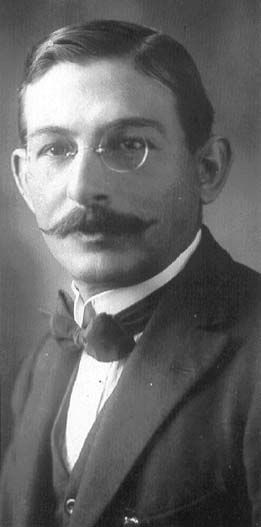
Chapter 1: Life
He was born on August 13, 1884 in Las Flores, in the city Las Flores, then a town in the district of Azul, Province of Buenos Aires. At an early age he was sent by his parents to the home of relatives living in the capital, in the Barracas neighborhood, to attend primary school. In this house he also began his musical education, studying guitar with a relative.
At eight years old, he joined a carnival troupe, standing out for his skill as a guitarist.
At thirteen he started working as a telegraph trainee at Ferrocarril del Sud, and in 1904 he was summoned to fulfill the mandatory military service.
None of this was enough to deter him from his musical vocation.
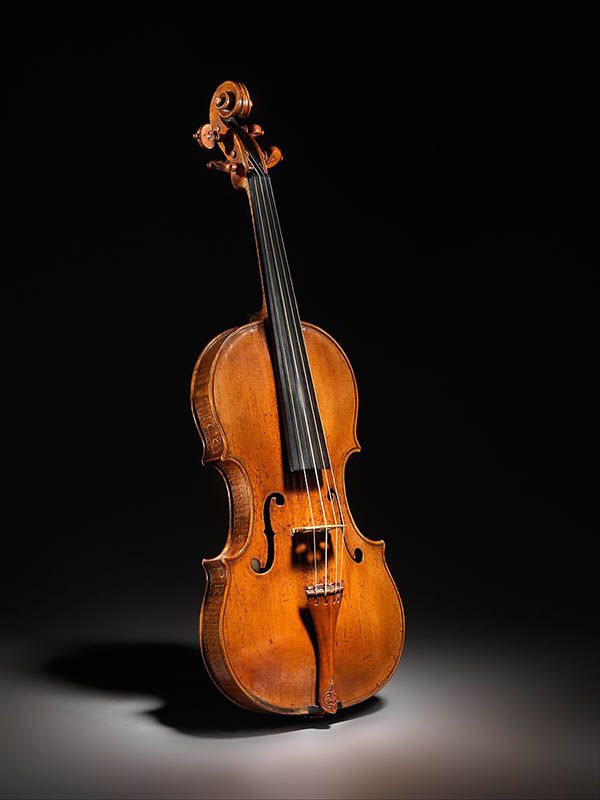
After the military service, he was employed with an initial position in the commercial company “La Cargadora”, located in Bolivar 375. He retired from the same company in 1935, after 30 years of excellent work, reaching the position of general manager.
In 1905, Bardi began playing the violin, perfecting himself for 3 years and in 1908 he began his career as a professional musician.
In 1909 he played in La Boca, the headquarters for Tango musicians of that time, where the Porteños’ popular music would begin to move to downtown, and from there, throughout the entire city.
He was average height, stocky, and broad-shouldered. With pleasant features, he wore a neatly trimmed mustache and doctoral lenses. His friends affectionately called him “El Chino” (The Chinese) because of the sharp longitudinal section of his eyelids, perhaps his most predominant feature.
He was temperamentally serious, circumspect, soft-mannered and had a restful, kind way of expressing himself.
He was not a man of the night, but rather dedicated to his family, his wife and two children.
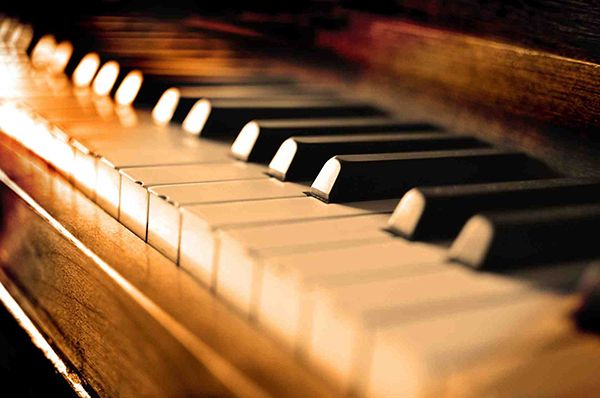
It was in 1910, when he joined the quartet of Genaro Expósito (bandoneon), in the cafe “La Marina”, after a season in the cafe “del Griego”, that one night, before opening the doors of the cafe to the patrons, Bardi sat at the piano vacated by “el Johnny” Prudencio Aragón, improvising some of the tangos of the quartet repertoire.
His teammates felt so comfortable with his interpretation that they urged him to play that instrument from then on.
And that is how Agustin Bardi became a pianist.
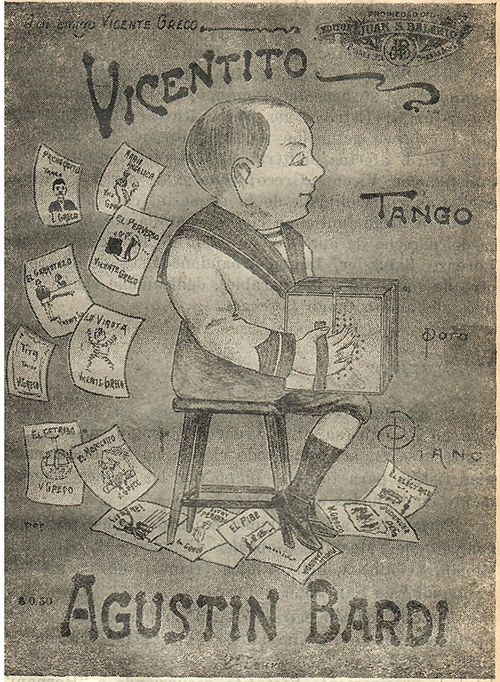
With his characteristic sense of responsibility, he began studying piano technique, reaching a good level in a few months.
As a pianist, he joined the quartet of flutist Carlos Macchi “Hernani”.
Then he left La Boca, to play in the cafe “El Estribo”, joining the orchestra of Vicente Greco. In 1911, Bardi composed “Vicentito”, dedicated to Greco, who recorded the song on two occasions, which launched the authorial career of Bardi.
Other ensembles of the time also began recording his tangos.
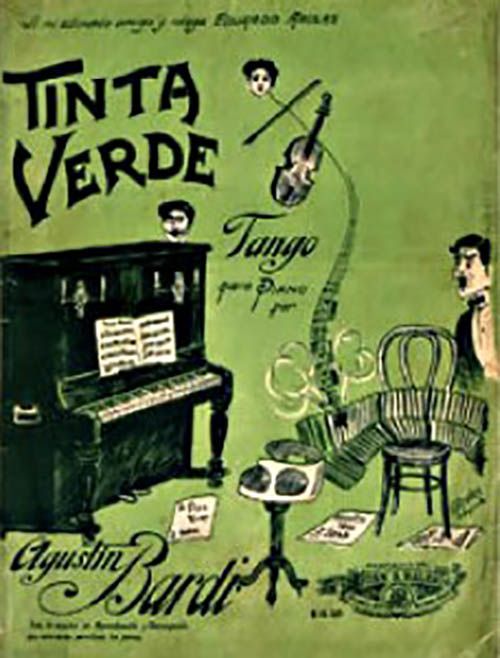
In 1914, Bardi played with Eduardo Arolas. It was at the time that Arolas returned to his artistic career after a frustrating venture to open his own business failed.
They played practically by heart, after sight reading, the tangos that day by day arose from the inspiration of the musicians.
Bardi deliberately set aside compositions that, once released, did not satisfy his demanding taste, and he refused to play them again when his orchestra partners requested it. But Arolas liked one of these tangos very much, and, in the face of Bardi’s excuse of having misplaced it, said: “the one you wrote with green ink (tinta verde)…”
This tango went on to become one of the most well known compositions of Agustín Bardi, whose original edition of the score featured a cover illustrated by Arolas himself.
Let’s listen to it in the rendition of Anibal Troilo y su Orquesta Típica recorded 1n 1938:
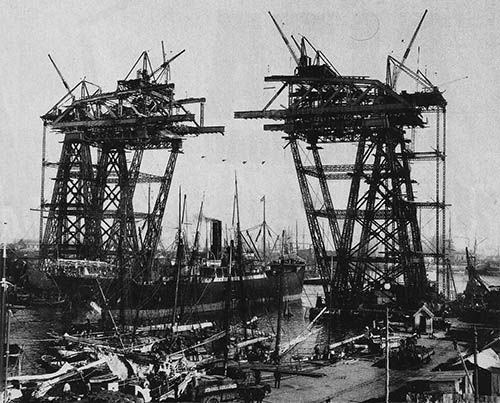
Having disconnected from Arolas, in 1916, he went on to play at the Avellaneda’s Paris cinema, which was a precursor to having orchestras for silent films, with a trio completed by Graciano de Leone on bandoneon and violinist Eduardo Monelos.
There, Bardi incorporated the tangos “El jagüel” and “Cordón de oro” into his repertoire, composed by Carlos Posadas — the composer he most admired — and made his own, “El rodeo”, known.
Here is the 1943 recording by Osvaldo Pugliese y su Orquesta Típica:
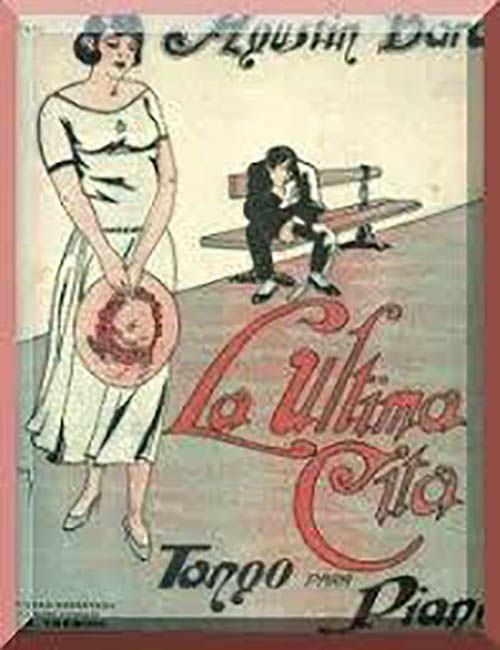
His work at the company “La Cargadora” often forced him to move away from musical activity as a performer, which is why he never wanted to take responsibility for conducting an orchestra.
He did not like to play in the cabarets, since these performances had to be done very late at night, and he had to get up early for his daytime work. The last years of his performance as a professional pianist developed in dancing halls on Saturdays and Sundays in the halls of the Spanish and Italian collectives.
At the beginning of 1921, he toured the interior of Argentina, taking advantage of his vacation from the company, with Graciano De Leone.
It was the prelude to his definitive departure as a professional pianist.
“La última cita” by Ángel D’Agostino y su Orquesta Típica with Ángel Vargas in vocals, recorded in 1944.
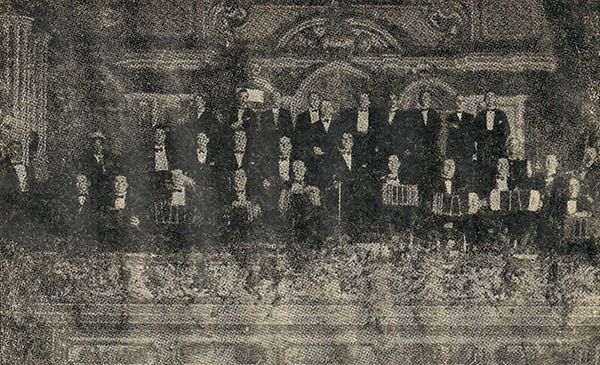
His last performances were in the giant orchestra that Francisco Canaro convened for the carnivals of 1921.
On this occasion, however, Bardi refused to Canaro’s invitation to premiere his tango compositions, claiming that he did not compose carnival tangos, nor was he interested in its diffusion under such circumstances.
From this moment, and then with his retirement from the company “La Cargadora”, Bardi devoted himself to the deep study of harmony and composition with the Salecian priest José Spadavecchia, to the composition of tangos, and to the manufacturing of rolls for pianolas for the company “Pampa”.
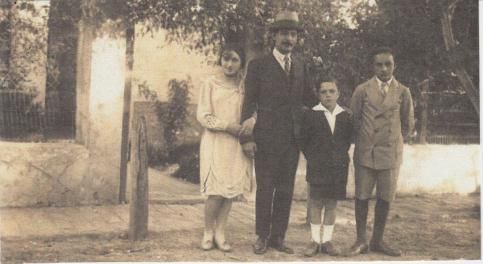
Another of Bardi’s great contributions to Argentine popular music was the creation, together with Canaro, Filiberto, Lomuto, Greco, Martinez and others, of a society that protected the rights of musicians and composers, a society that over time would become the prestigious Sociedad Argentina de Autores y Compositores de Música (SADAIC).
He died on April 21, 1941.
Chapter 2: Work
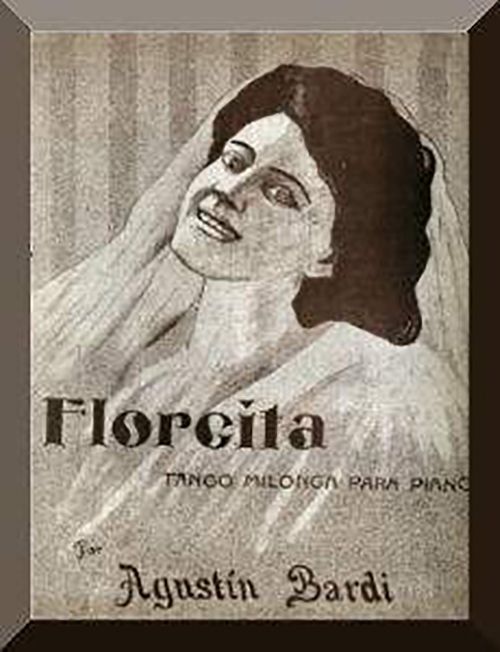
Bardi’s compositions were ahead of his time.
Like Eduardo Arolas’s compositions, they had to wait for the arrival of more trained interpreters, in the mid 1920s, to present all the splendor of their beauty.
According to Luis Adolfo Sierra, Agustín Bardi’s compositions contain “clarity in the concept of sound elaboration, balance in the melodic drawing of always pure and direct phrases, some sumptuousness in the firmness of the harmonic structure, and a refined good taste, they are in general the salient attractions that emerge in the entire work of this talented composer ”.
Let’s hear “Florcita” recorded by Lucio Demare y su Orquesta Típica in 1945:
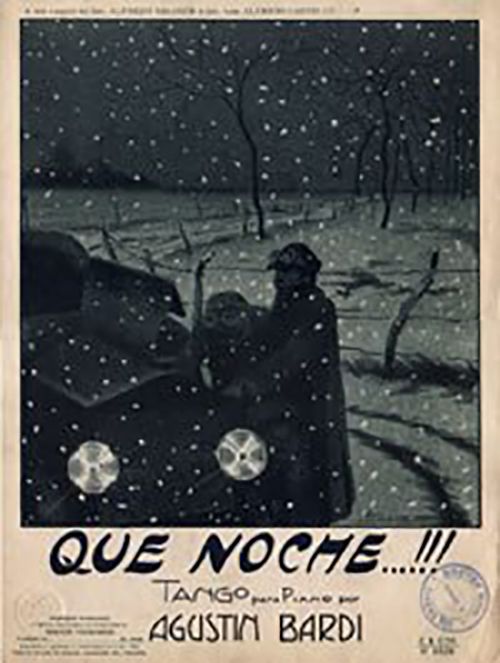
Luis Adolfo Sierra adds next: “Bardi felt a marked propensity towards harmonized melody. He was passionate about the effects of syncopation and tonal modulations within melodic development … He admirably handled the development of half-stepped melodies. that is, everything that would bring musical charm into an intransigent stylistic purism. And, above all, he was a jealous self-critic of his authorial production.”.
Bardi himself said that “it is necessary to achieve the greatest melodic clarity, to beautify it later with the appropriate resources of musical technique.”Let’s listen to “¡Qué noche!” recorded by Juan D’Arienzo y su Orquesta Típica in 1937:
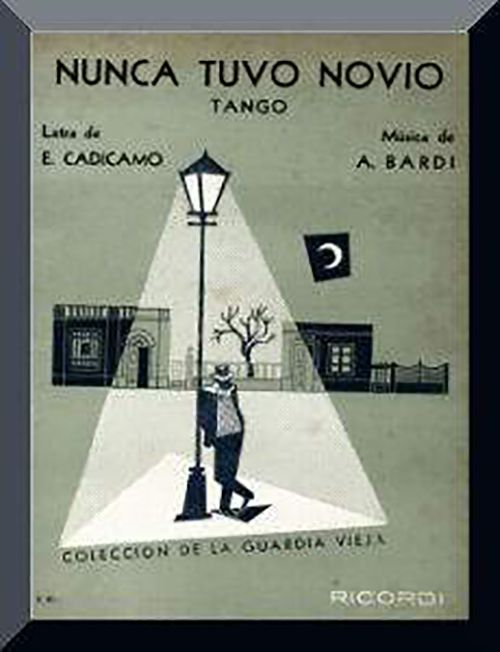
So much was his sense of aesthetic and professional responsibility that at the age of forty he decided to study musical theory in more depth to put his future compositions at the height of the great Tango instrumentalists of the “De Caro’s” school.
Here is the recording of “Nunca tuvo novio” by Pedro Laurenz y su Orquesta Típica with Alberto Podestá in vocals from 1945:
Agustín Bardi has very deservedly received the title of “composer of musicians.”
The excellent quality of his works always had the recognized admiration of all professional musicians without exception.
The musical elaboration of his tangos allows the showcasing of the Orquestas Típicas in any of its interpretative modalities.
Before Cobián, Fresedo, De Caro, Maffia, Laurenz, and the definitive renovation line that Roberto Firpo printed to his orchestra in the early twenties, there was no clear definition of styles in Tango.
Until then the people in Tango was more interested in the repertoire itself, the quality or success of the work, than the way of playing.
Tango was executed using the simplest chords, accentuating a rhythmic marking with a certain monotonous rigidity, without individual performance of the musicians, in a joint work of all voices in unison.
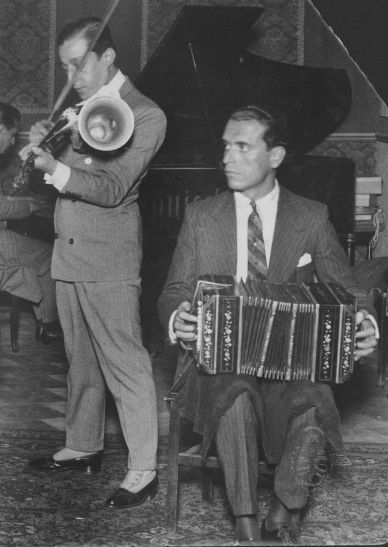
Bardi’s tangos were not written to be played in the manner of primitive ensembles, without harmonic concerns or aesthetic interest in achieving greater musical enhancement.
The greater technical possibilities of the musicians of later promotions, from Julio De Caro, allowed them to enter the spirit and the musical structure of Bardi’s tangos.
Julio De Caro found the precise formula and opened the gap by which would then follow the evolution of Tango music, and gave his versions of Bardi’s compositions an aesthetic dimension that primitive ensembles could not have achieved.
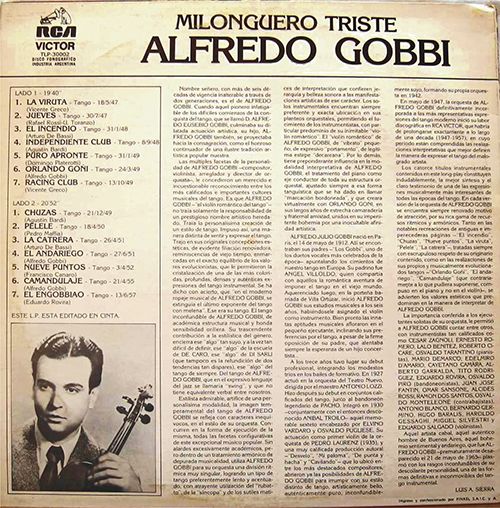
Thus, other excellent later ensembles collected the attractions of the instrumentation techniques exhibited by the De Caro’s orchestra, making it clear that Bardi’s tangos were written to be played like this.
Here is an excellent example in the recording of “Chuzas” by Alfredo Gobbi y su Orquesta Típica in 1949:
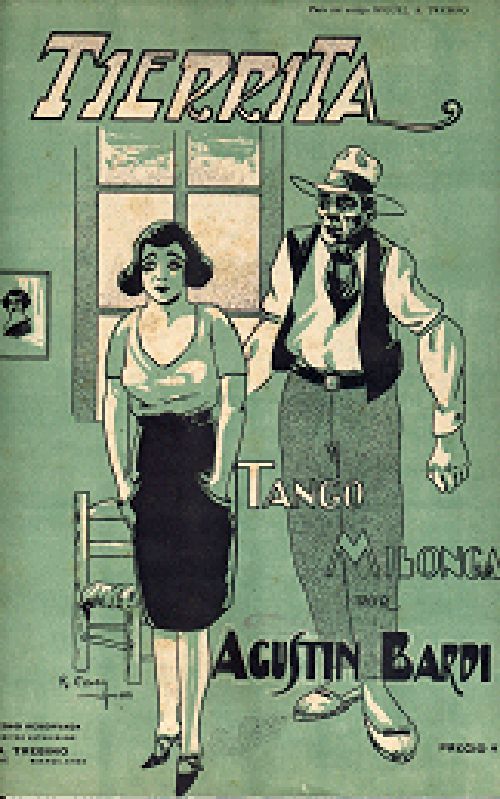
Bardi’s works always retain freshness and strength, reaching ever greater attraction in their audiences for the beauty and authenticity of their content.
Listen for example to “Tierrita”, recorded here by Ricardo Tanturi y su Orquesta Típica in 1937:
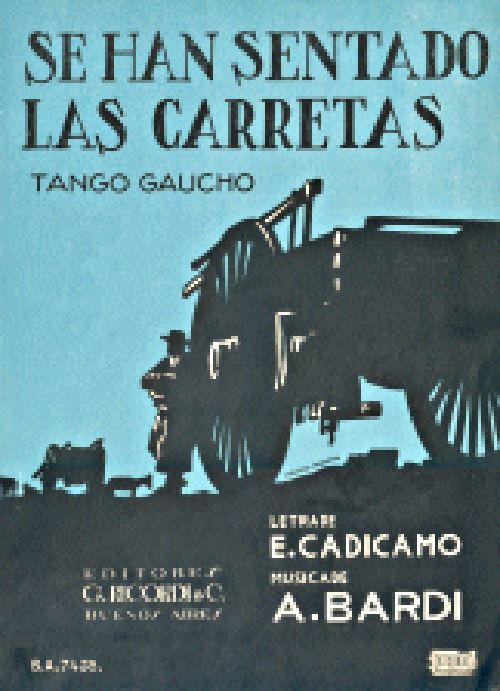
Bardi felt “Tango with a countryside essence, as if it were a transplant of the traditional Argentine gaucho sensitivity to the music of Tango, which is the most representative sentimental manifestation of the city.”
Here is the recording of “Se han sentado las carretas” by Francisco Lomuto y su Orquesta Típica with Fernando Díaz and Jorge Omar in vocals, 1939:
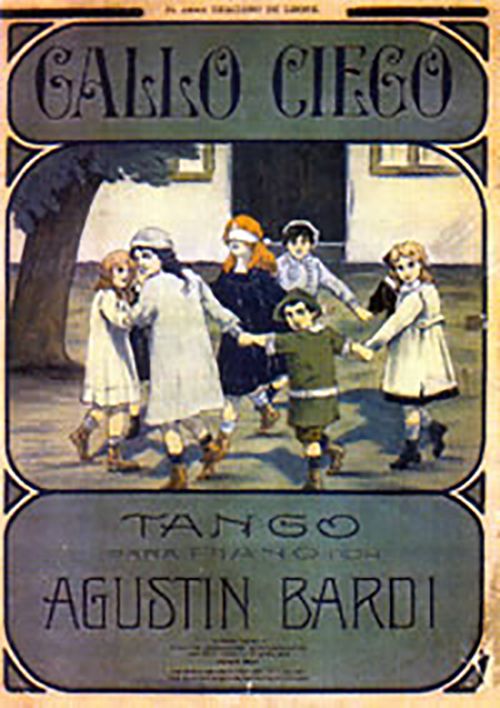
Bardi regularly attended the presentations of the Julio de Caro’s sextet.
L. A. Sierra tells us that Bardi confessed to experiencing immense spiritual joy every time he listened to some of his compositions through what he so happily called:
“the great interpretative creations of the Julio De Caro’s orchestra.”
Let’s listen to “Gallo ciego”, recorded here by Julio De Caro y su Sexteto Típico in 1927:
And Luis Adolfo Sierra adds that “when Bardi extended his praise to the Julio De Caro’s orchestra, it was to affirm that ‘it was formed by six composers, each elaborating on the prodigy of their respective instruments, an inspired and difficult score, always embellishing the values of the work with excellent musical ideas of original creation, without altering or distorting its own original feeling ”.
Remarkable assessment judgment that could be gathered as irrefutable testimony of the significance of that orchestra in the evolution of instrumental Tango.
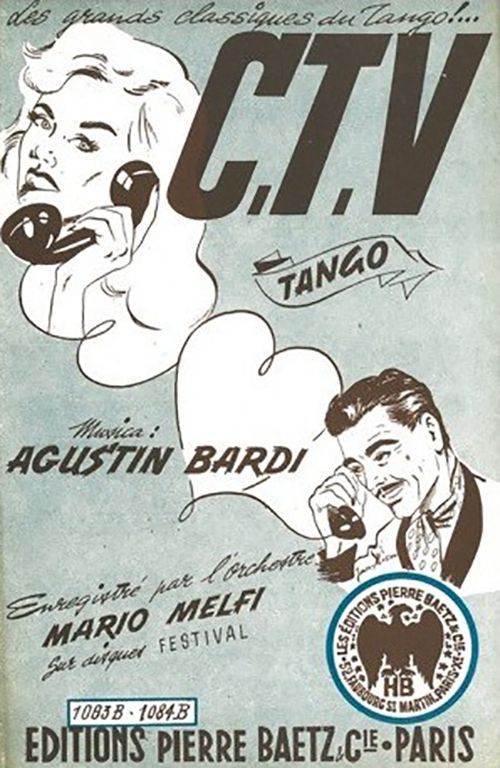
In 1937, Bardi regularly attended the Germinal café on Corrientes Street to listen to the brand-new Anibal Troilo’s orchestra, and used to exclaim with sincere admiration:
“We would not have been able to play like that!”
Let’s hear the rendition of “C.T.V.” recorded by Anibal Troilo y su Orquesta Típica, 1940:



